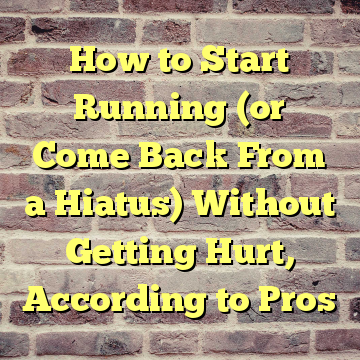[brightcove:5604378019001 default]
New to running, or just trying to get back into it after a hiatus? Great. It’s one of the easiest sports to take up—all you need is a great pair of kicks and a sports bra, and you’re ready to go. Plus making your way through miles can help you shed pounds, bust stress, and even lower your risk of getting certain cancers.
Before you head out the door at full speed, though—which will almost certainly leave you injured—consider this: “Running is really hard on your body and you just have to be smart about it,” says John Hancock Elite Ambassador Blake Russell, an Olympic marathoner, physical therapist, and owner of On Track Physical Therapy in Pacific Grove, California. “The key is just starting out really slow.”
Here Russell and her fellow John Hancock Elite Ambassador Bill Rodgers, a four-time Boston Marathon winner, offer five tips for helping newbies run strong and long.
Stick to soft surfaces
While there is nothing wrong with pounding the pavement, it can be harsh on the body, especially if yours isn’t used to the movement or surface. Russell’s rec: start off on softer surfaces (think grass, sand, or even the treadmill). While a softer surface doesn’t automatically equal injury-free, a small study in the journal Research in Sports Medicine revealed that running on grass, for instance, puts less pressure on the foot compared to running on concrete.
RELATED: 13 Causes of Leg Cramps and How to Stop Them
Give yourself time to build muscle
“It takes the body at least six weeks to build muscle,” says Russell, “so give your body time to build that muscle.” In other words, don’t take on too much mileage too soon; that’s a surefire way to end up sidelined. To help your body adapt, and shore up those muscles, consider strengthening exercises, such as planks, clamshells, side squats. (See how to do them here.)
Try the run-walk method
Can’t make it through your miles without stopping? That’s OK. While you are building your endurance (or if you just need a break mid-run), there is nothing wrong with a little walking. Rodgers suggests trying the run-walk method, which is running for a set amount of time, walking for a set amount of time, and then repeating the cycle. We recover when we walk, notes Rodgers, who believes that the 5K is an ideal running distance and that our bodies were made to run around three miles. (If you will be in the Clearwater, Florida, area in December, there is still time to register for the Cooking Light & Health Fit Foodie Festival and 5K Foodie Race. Register here!)
For more fitness tips, sign up for the HEALTH newsletter
Don’t run everyday
Don’t be afraid to slip off those sneaks. “Take some days off if you are new to it, don’t feel you have to run seven days a week,” says Russell. When you exercise, you are basically causing trauma to the body by creating micro tears in the muscle. Days off allow the body to recover and those muscles to grow back stronger.
And don’t skimp on recovery
According to Russell, recovery is just as important as training. What you do when you’re off your feet will surely help you make strides while you’re on ‘em. Great practices to employ in your recovery routine: stretching, foam rolling, and massages. This, along with strength moves, will keep your body and joints loose and strong, she notes. And don’t forget to refuel—a 3-to-1 ratio of carbs to protein (think apple with peanut butter) within an hour of finishing your run helps replenish your energy so you can recover faster.
